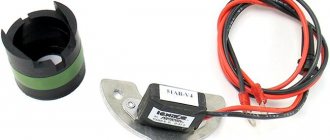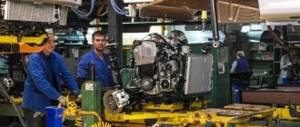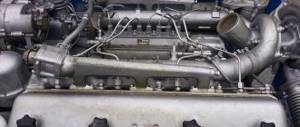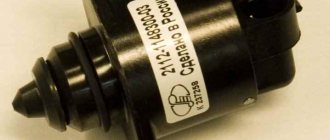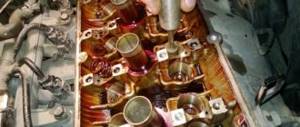Synchronous motor
This type of engine is capable of working both as a generator and as an engine itself. Its device is similar to a synchronous generator. A characteristic feature of the engine is the constant rotor speed depending on the load.
These types of motors are widely used in many applications, such as electrical wires that require constant speed.
How does a synchronous electric motor work?
Synchronous machines are often used as generators. It operates synchronously with the mains frequency, so it, with an inverter and rotor position sensor, is an electronic analogue of a DC commutator motor.
Structure of a synchronous electric motor
Properties
These engines are not self-starting mechanisms, but require external influence in order to gain speed. They have found application in compressors, pumps, rolling machines and similar equipment, the operating speed of which does not exceed five hundred revolutions per minute, but an increase in power is required. They are quite large in size, have a “decent” weight and a high price.
There are several ways to start a synchronous electric motor:
- Using an external power source.
- Start is asynchronous.
In the first case, using an auxiliary motor, which can be a DC electric motor or a three-phase induction motor. Initially, no direct current is supplied to the motor. It begins to rotate, reaching close to synchronous speed. At this moment, direct current is supplied. After the magnetic field closes, the connection with the auxiliary motor is broken.
In the second option, it is necessary to install an additional short-circuited winding in the pole pieces of the rotor, crossing which the magnetic rotating field induces currents in it. They, interacting with the stator field, rotate the rotor. Until it reaches synchronous speed. From this moment, the torque and EMF decrease, the magnetic field closes, reducing the torque to zero.
These electric motors are less sensitive than asynchronous motors to voltage fluctuations, have a high overload capacity, and maintain a constant speed under any load on the shaft.
Operating principle of a synchronous motor
Its operation is based on the interaction of the rotating magnetic field of the armature and the magnetic fields of the inductor poles. Typically the armature is located in the stator, and the inductor is located in the rotor. For powerful motors, electric magnets are used for the poles, and for weak motors, permanent magnets are used.
The operating principle of a synchronous motor includes (short-term) and asynchronous mode, which is usually used to accelerate to the required (that is, rated) rotation speed. At this time, the inductor windings are short-circuited or by means of a rheostat. After reaching the required speed, the inductor begins to be powered with direct current.
Asynchronous motor
This type of device is a mechanism aimed at transforming alternating current electrical energy into mechanical energy. From the very name “asynchronous” we can conclude that we are talking about a non-simultaneous process. Indeed, the rotation frequency of the stator magnetic field here is always higher than the rotor one. Such a device consists of a cylindrical stator and a rotor, depending on the type of which squirrel-cage asynchronous motors can also have a phase-wound rotor.
Operating principle and design of different types of electric machines
Asynchronous and synchronous electric motors are similar in design, but there are also differences.
Design and principle of operation of asynchronous electric motors
These are the most common AC machines. Such electric motors consist of three main parts:
- Housing with bearing shields and feet or flange.
- The housing contains a magnetic circuit made of iron plates with windings. This magnetic circuit is called a stator.
- Shaft with bearings and magnetic core. This structure is called a rotor. In electric motors with a squirrel-cage rotor, the magnetic circuit contains aluminum rods interconnected; this design is called a “squirrel cage”. In machines with a wound rotor, instead of rods, windings are wound.
Three windings are wound in the stator slots with a 120° offset. When connected to a three-phase network, a rotating magnetic field is induced in the stator. The speed of rotation is called "synchronous speed".
Reference! In single-phase electric motors, the rotating field is created by an additional winding or design features of the stator.
This field induces an EMF in the rotor, and the resulting current creates its own field, interacting with the stator field and setting it in motion. The rotor speed is less than the synchronous speed. This difference is called slip.
Slip is calculated using the formula S=(n1-n2)/n1*100%, where: · n1 - synchronous speed; · n2 — rotor rotation speed.
Nominal value
the slip rate in conventional electric motors is 1-8%. As the load on the motor shaft increases, slip and torque increase to a critical value, upon reaching which the motor stops.
In electric motors with a wound rotor, instead of a squirrel cage, three windings are wound in the slots of the rotor. They are connected to additional resistances through slip rings and brushes. These resistances limit the current and magnetic field in the rotor. This increases slip and reduces engine speed.
Such devices are used for heavy starting and in devices with speed control, for example, in overhead cranes.
Operating principle of synchronous electric motors
These motors are more complex and more expensive than asynchronous machines.
Their advantage is a constant rotation speed that does not change with load. The stator of a synchronous machine is no different from an asynchronous one. The difference is in the rotor. Unlike an asynchronous motor, rotation is carried out due to the interaction of the rotating magnetic field of the stator and the constant field of the rotor. To create it, there are electromagnets in the rotor. Voltage is supplied to the coils using slip rings and graphite brushes.
Reference! In the rotor of low-power synchronous machines, permanent magnets are installed instead of electromagnets, or the magnetic circuit simply has pronounced poles. There is no slipping, as in asynchronous machines, and the rotation speed is determined only by the frequency of the supply voltage.
Synchronous and asynchronous motor: differences
The difference between how engines work is in the rotor. In the synchronous type, it consists of a permanent or electric magnet. Due to the attraction of opposite poles, the rotating field of the stator also attracts the magnetic rotor. Their speed is the same. Hence the name - synchronous.
In it, unlike asynchronous, it is possible to achieve even a phase advance of voltage. The device, like capacitor banks, can then be used to increase power.
Asynchronous motors, in turn, are simple and reliable, but their disadvantage is the difficulty of adjusting the rotation speed. To reverse a three-phase asynchronous motor (that is, change the direction of its rotation in the opposite direction), the location of two phases or two linear wires approaching the stator winding is changed.
If we consider the rotation speed, then there are differences between synchronous and asynchronous motors. In the synchronous type, this indicator is constant, unlike in the asynchronous type. Therefore, the first is used where constant speed and complete controllability are required, for example, in pumps, fans and compressors.
It is very easy to detect the presence of the types of devices in question on a particular device. An asynchronous motor will have a non-round number of revolutions (for example, nine hundred and thirty per minute), while a synchronous motor will have a round number (for example, a thousand revolutions per minute).
Both motors are quite difficult to control. The synchronous type has a rigid mechanical characteristic: for any changing load on the motor shaft, the rotation speed will be the same. In this case, the load, of course, must change taking into account that the engine is able to withstand it, otherwise this will lead to breakdown of the mechanism.
This is how a synchronous and asynchronous motor works. The differences between both types determine the scope of their use; when one type copes with a task optimally, for the other it will be problematic. At the same time, you can also find combined mechanisms.
Design and principle of operation
The main driving force of any electric motor is electromagnetic induction. Electromagnetic induction, to describe it in a nutshell, is the appearance of current in a conductor placed in an alternating magnetic field. The source of the alternating magnetic field is a stationary motor housing with windings placed on it - a stator connected to an alternating current source. It contains a moving element - a rotor, in which current arises. According to Ampere's law, an electromotive force - EMF - begins to act on a charged conductor placed in a magnetic field, which rotates the rotor shaft. Thus, the electrical energy supplied to the stator is converted into mechanical energy by the rotor. Various mechanisms that perform useful work can be connected to the rotating shaft.
AC electric motors are divided into synchronous and asynchronous. The difference between them is that in the first, the rotor and the magnetic field of the stator rotate at the same speed, and in the second, the rotor rotates more slowly than the magnetic field. They differ both in structure and principle of operation.
Asynchronous motor
Windings are attached to the stator of an asynchronous motor, creating an alternating rotating magnetic field, the ends of which are brought out to the terminal box. Since the engine heats up during operation, a cooling fan is installed on its shaft.
The rotor of an asynchronous motor is made with the shaft as a single unit. It consists of metal rods closed to each other on both sides, which is why such a rotor is also called a squirrel-cage rotor. In appearance, it resembles a cage, which is why it is often called a “squirrel wheel”. The slower rotation of the rotor compared to the rotation of the magnetic field is the result of power loss due to friction of the bearings. By the way, if there had not been this difference in speed, the EMF would not have arisen, and without it there would have been no current in the rotor and no rotation itself.
The magnetic field rotates due to the constant change of poles. In this case, the direction of the current in the windings changes accordingly. The rotation speed of an asynchronous motor shaft depends on the number of poles of the magnetic field.
Synchronous motor
Synchronous motor device
The design of a synchronous electric motor is slightly different. As the name suggests, in this motor the rotor rotates at the same speed as the magnetic field. It consists of a housing with windings attached to it and a rotor or armature equipped with the same windings. The ends of the windings are brought out and fixed to the collector. Voltage is applied to the commutator or slip ring via graphite brushes. In this case, the ends of the windings are placed in such a way that voltage can be applied to only one pair at a time.
Unlike asynchronous motors, voltage is supplied to the rotor of synchronous motors by brushes, charging its windings, and is not induced by an alternating magnetic field. The direction of the current in the rotor windings changes in parallel with the change in the direction of the magnetic field, so the output shaft always rotates in one direction. Synchronous electric motors allow you to regulate the speed of rotation of the shaft by changing the voltage value. In practice, rheostats are usually used for this.
